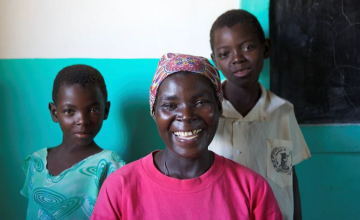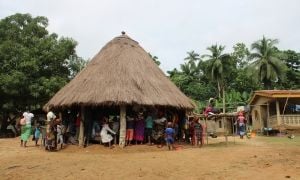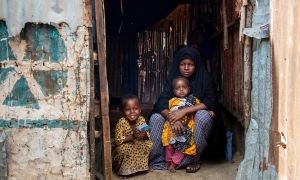
Knowledge Hub
Adolescent nutrition: the missing link in the life cycle approach
Erin Homiak, Concern’s Nutrition adviser in Mozambique writes about the interrelationship between the biological and social factors that shape adolescent nutrition.

Objective
To understand the extent to which adolescent health is being addressed in order to improve nutritional outcomes in Manica province, Mozambique and to highlight the global evidence-base and best practices in addressing adolescent nutrition to reduce stunting and improve the nutritional status of the overall population. This steering document uses the life cycle approach as its conceptual framework and looks at the interrelationship between biological and social factors that shape adolescent nutrition.
Design
We analysed the extent to which adolescent nutrition is being addressed in Manica province using the indicators of Mozambique’s Multi-Sectorial Action Plan for the Reduction of Chronic Malnutrition (PAMRDC) (Republic of Mozambique, 2010), as a guiding framework. Our findings from the field indicate great opportunity to address adolescence nutrition and health.
Conclusions
We suggest ways in which the development community may address this gap in adolescent health through programmatic design and implementation, in order to improve nutrition outcomes through evidence-based interventions.
Recommendations
In order for Mozambique to reduce chronic undernutrition there needs to be a paradigm shift in the way populations are targeted, taking the life cycle approach into account bringing adolescents to the forefront.
- Nutrition interventions should define female adolescents as a separate target group apart from their older adult counterparts.
- The reduction of pregnancies in female adolescents should be a central component of nutrition programmes that seek to reduce chronic undernutrition, taking gender into account and engaging men.
- All outreach mechanisms should address early child marriage considering this is one of the strongest drivers of teen pregnancy (Save the Children, 2015). To this end we should also be engaging men, recognizing that there are many determinants of early marriage.
- The current delivery platform, Geração Biz, should be utilized to full capacity in order to increase care-seeking behaviour and ensure that SAAJ services are being accessed by the intended consumers.
- The interventions should be equitable, targeting adolescents in, and out of, school.
Download the full article at the link below.
This publication covers aid activities implemented with the financial assistance of Irish Aid and DFID. The ideas, opinions and comments therein are entirely the responsibility of its author(s) and do not necessarily represent or reflect Irish Aid or DFID policy.





